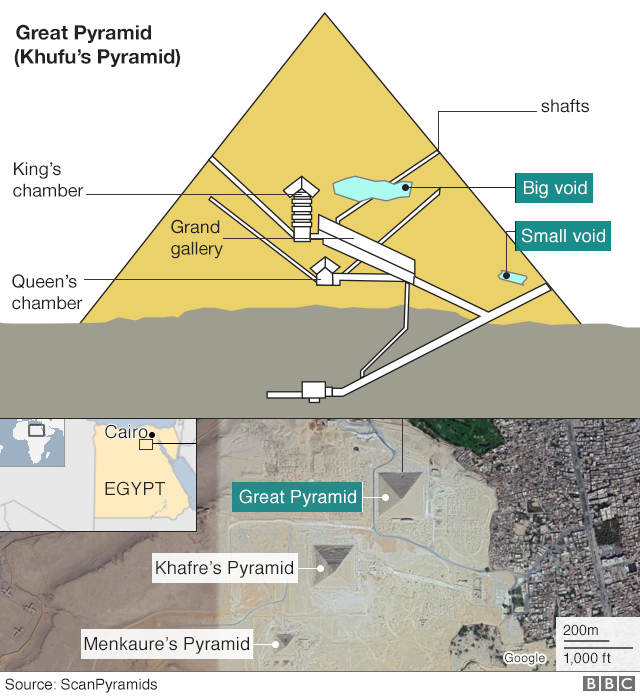Scientists argue over the mysterious void discovered inside the Great Pyramid of Giza, also known as the Pyramid of Khufu, the oldest and largest of the three pyramids in Giza, Egypt.
The Great Pyramid of Giza has towered over Egypt for more than 4,500 years. Built during the reign of Pharaoh Khufu, the monument was a testament to the ruler’s architectural prowess and is thought to have been a home for his mummified remains.
For centuries, archaeologists have ventured into the Pyramid of Khufu and marveled at the king’s chamber, the queen’s chamber and the grand gallery. Now, using a technique from the field of particle physics, an international team of researchers has harnessed cosmic-ray collisions to peek inside and uncover a hidden “void” within the pyramid’s stones, roughly 30 meters long, the New York Times reported.
“We don’t know if it’s a chamber, a tunnel, a big gallery or things like that,” said Mehdi Tayoubi, co-director of the ScanPyramids project, which published the finding November 2 in the journal Nature. “We have chosen the word ‘void’ and nothing else because we don’t know what it is.”
Many archaeologists questioned whether the study offered any new information about the ancient Egyptians, and were quick to note that the team had most likely not found a hidden room filled with the pharaoh’s riches. They said the so-called void was probably empty space designed by the pyramid’s architects to lessen the weight on its chambers and prevent them from collapsing, an example of features that were already documented in the construction of the ancient monuments.
However, the study may suggest that advances in technology can offer a richer understanding of wonders of the ancient world that have long fascinated the human imagination.
Khufu, also known by his Greek name Cheops, is thought to have ruled from 2509 BC to 2483 BC, during Egypt’s fourth dynasty. Though he constructed the largest pyramid Egypt has ever seen, the only intact three-dimensional figure of him that archaeologists have found measures a mere three inches tall.
Very little is known about him, so his pyramid offers one of the few looks into his life and reign. The site at Giza where his pyramid was built also contains two other major pyramids and the Sphinx.
The void was first measured by researchers from Nagoya University in Japan who were a part of the project. Then two more teams associated with ScanPyramids, one from France and another from Japan, also confirmed the anomaly with muon tomography, even from outside the pyramid. The discovery comes on the footsteps of the team’s previous work, which detected a small void behind the north face of the pyramid in 2016.


